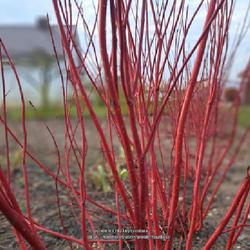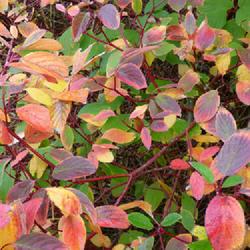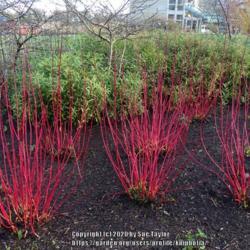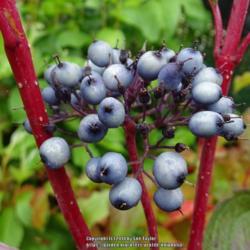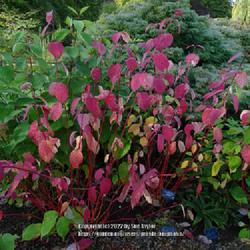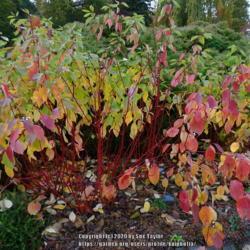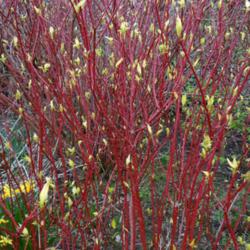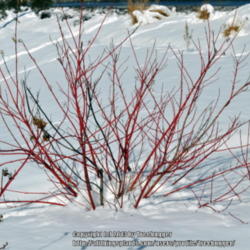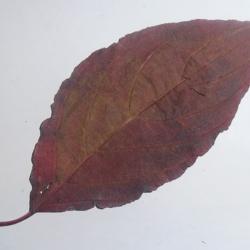Posted by
ILPARW (southeast Pennsylvania - Zone 6b) on Oct 4, 2021 2:54 PM concerning plant:
Well, have fun trying to be sure of whether a certain red-twigged shrub is this Siberian Redtwig Dogwood from northern Asia v.s. the Redosier Dogwood (Cornus sericea) of much of the US and southern Canada. The best way to tell the difference is that the "stone" that is the seed inside the white drupe fruit is higher than wide and flattened at each end for this Asian species, while the American species has a stone that is as broad as high, or slightly broader, with a rounded base. Otherwise the leaves of the Siberian species get to 4 inches long while the American species get to 5 inches long, according to the textbook of Dr. Michael Dirr. Furthermore, the American species does spread some by stolons, stems along the ground, and I originally learned its scientific name as Cornus stolonifera. The Asian species does not really sucker. Both shrubs are pretty much identical. They do best in full sun and moist to draining wet soil. They can tolerate some shade, but more shade means more leaf spots or stem canker disease that can occur. Do not plant them on dry hills, berms, or slopes. One can prune them every two or three years by removing the larger stems close to the ground; otherwise the stems lose their red color to gray-brown. One can also prune out 1/3rd of the big stems every year. Do not shear any kind of redtwig dogwood shrub as it will encourage stem canker. If maintained, it is a good-looking shrub with smooth, red stems during the cold half of the year, nice foliage, white flattish flower clusters, and white to bluish-white round clusters of drupes (berries).
